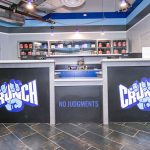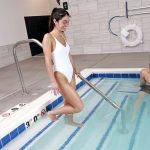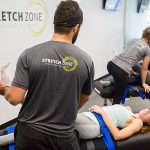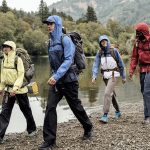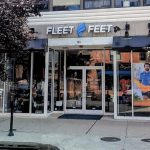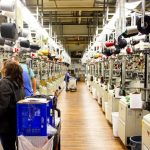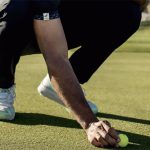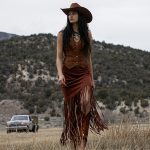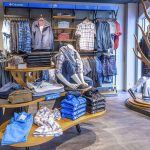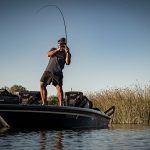After nearly a decade of growth that barely kept up with inflation, 2005 was a watershed year for athletic footwear. Total sales were up in the low-teens, or low-singles on a comp basis, the best increase since the mid-90s. Another note of good news was that average selling prices were up in the low-single-digits as well, leveraging a low-teens increase in unit sales.
Sports Executive Weekly presents a quick overview of the athletic footwear business in 2005, based on the most recent data available from SportScanINFO, which measures weekly point-of-sale data from over 15,000 stores across the Sports Retail, Family Retail, and Discount/Mass retail channels. The analysis herein is a snapshot of the 2005 SportsOneSource Sporting Goods Market Report that will be available in early May.
Based on the SportScanINFO data, the biggest drivers of the sales increase were womens athletic footwear and running footwear in general. Classics footwear styles saw their fortunes slip as the year progressed as performance product captured the momentum in the first half of the year and fashion athletic styles picked up steam in the back half. The trend appears to be continuing into fiscal 2006 as Nikes Air Max 360 creates new energy around the performance end and the shift to euro casual fashion athletic product takes even more air out of the classics bubble.
Sales to female consumers were up in the high-teens, or a mid-singles comp, with the biggest increases in the family retail channel, primarily family footwear, which continues to capture the department store consumer. Running clearly had the best growth for the womens category, with sales up more than 25%. Top womens sellers in dollars sold were Nike Air Force 1, K-Swiss Classic, Asics 2100, Reebok Princess, and Asics 1100.
Nike stayed atop the market share leader board for the year, with a share of just under 40% in the athletic footwear category. adidas had a strong year in the U.S. and moved into the number two spot in share, picking up more than 100 basis points from 2004, thanks in part to a six percent increase in ASP. New Balance was only up in mid single-digits for the year, but a decline on a comp store basis saw its market share decline 80 basis points in share leading to a fall to the three spot. ASPs for NB declined in the mid-singles.
Reebok maintained the number four spot in share, but gave up 75 basis points in share percentage, due primarily to the slowdown in classics and a six percent decrease in ASPs, which were already the lowest of the Top 5 Brands. Running-focused Asics had a very strong year, with sales at retail up more than 25% and market share up 40 basis points. The brand did even better in the running specialty channel. K-Swiss had a tough ending to 2005, again hampered by the softness in white classic footwear.
Skechers had the biggest year of any of the larger brands. Clearly the trend to lifestyle athletic looks benefited this brand. They had an increase of nearly 50% and an ASP increase in the mid-singles. Share improved 60 basis points.
Timberland had an increase in the mid-teens. Avia declined in the low singles and And 1 declined nearly 10%. Saucony was the one running brand that did not show an increase, with sales down more than 20%. Converse improved by nearly 25%. Puma sales were up more than 75% at retail for the year in the sports retailer and family retailer channels.
Helped by the strong womens business, the running category had an outstanding year, where sales were up almost 25% for 2005. ASP was up in the low-singles-digits. What was particularly striking about running shoes was that sales above $75 were up more than 40%. Asics held the first three spots in top sellers, lead by the GT 2100 for men and women and the Kayano. The 2100 was no doubt helped by a flurry of off-price ads at the end of the year to clear inventories for the 2110. New Balances warhorse 991, now put out to stud, was fourth in dollar sales followed by a Nike Turbo OZ. Nike still has the biggest share in running (42%) and posted a double-digit increase in sales. New Balance, adidas, Asics, and Mizuno all had very strong increases.
Basketball showed an increase in the low-teens in 2005, driven primarily by outstanding results in retro Jordan products. Seven of the top ten sellers in dollars were retro Jordan products. Two adidas Superstars appeared on the top seller list as well. ASP in basketball improved in the mid-singles to more than $65. Nike owned more than two-thirds of the basketball business.
Casual footwear maintained the top volume slot in 2005, with sales up in the mid-teens. Nike has the largest share, about one-third, on strong Air Force 1 numbers. Reebok still has the number two slot, but lost 250 basis points in share as classic sales really softened at the end of the year. K-Swiss gave up 200 basis points in share for the same reason. Skechers picked up nearly 50% in the casual category, and gained 200 basis points in share, as the trend moved to the low-ride athletic lifestyle looks.
Cleated footwear was flat to the previous year and saw no meaningful shifts in share. While we dont expect the total sales to increase much in 2006, Under Armours entry into the business will make this a category to watch this year. Cross-training sales were down almost 10%, with a low-singles decline in ASP. Nike maintained the top share spot, followed closely by New Balance. The two brands account for more than 80% of this declining business. Outdoor footwear finished strong with the more seasonable December weather. Sales for the year were up more than 30%. Timberland had the largest share (more than 25%), but lost share to the Wolverine brands. Columbia also lost share in 2005.
Look for the availability of the full report in early May. And look for major changes afoot at SportScanINFO, with the launch of Version 3.0 on March 29.

